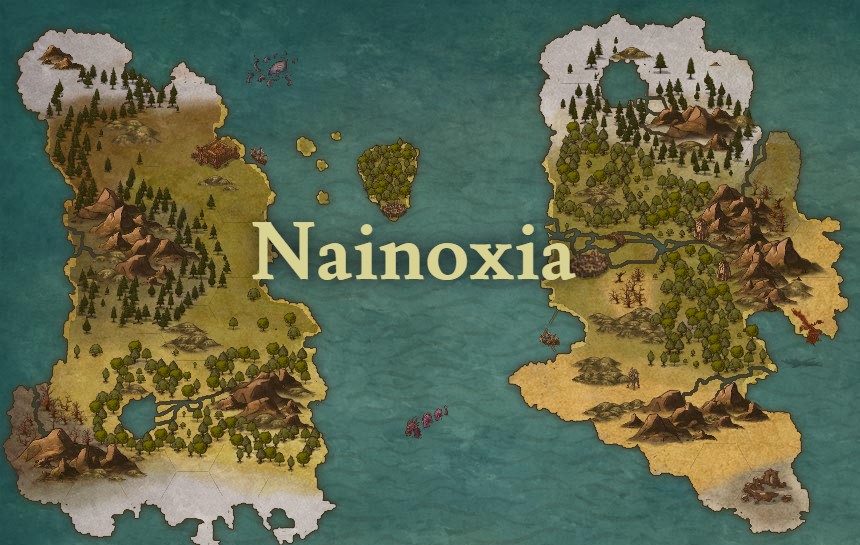Orcs
The Orcs are the most widespread race in Nainoxia, being found in every continent, even the island of Ulathian. Some scholars even theorize that this means that the Orcs are a more ancient race than otherwise though, although counterarguments are made supporting that since they live in the higher parts of the underdark as well as the surface, it is likely that they just spread very fast because of their constantly fighting nature. The Orcs are with few exceptions very aggressive, and will attack and raid settlements if they are not kept busy with infighting within the clan.
The Orcs are classified as Greenskins as well as some Goblins. The clans worshiping Gruumsh are the more well-known around the empire, and by far the most common ones to be encountered, as the clans of Luthror are forced to retreat into the underdark. The clans worshiping Gruumsh utilize Goblins as forced labor, disposable soldiers or sometimes source of entertainment. In contrast, the clans worshiping Luthror are largely unknown to the world, as they are always in conflict with the Orcs of Gruumsh, and that is not an environment that many scholars want to spend resources investigating.
The Orcs are classified as Greenskins as well as some Goblins. The clans worshiping Gruumsh are the more well-known around the empire, and by far the most common ones to be encountered, as the clans of Luthror are forced to retreat into the underdark. The clans worshiping Gruumsh utilize Goblins as forced labor, disposable soldiers or sometimes source of entertainment. In contrast, the clans worshiping Luthror are largely unknown to the world, as they are always in conflict with the Orcs of Gruumsh, and that is not an environment that many scholars want to spend resources investigating.
Basic Information
Anatomy
Tall muscular humanoids, with green tough skin and large bottom canine teeth.
Genetics and Reproduction
Orcs reproduce sexually, the orc females resemble a slightly less muscular and more female orc.
Growth Rate & Stages
The growth rate for orcs is dramatically shorter than the other races, only at 5 years for an orc to go from newborn to adult.
Ecology and Habitats
Orcs generally live in 2 places, either caves and the upper parts of the underdark, or ramshackle war-camps.
Civilization and Culture
Major Organizations
The orcs are seperated into two main tribes, the Greenskin Gruumsh Clans and the Greenskin Luthror Clans which are locked in eternal conflict with one another.
The article represents the information known to the empire scholars, as more and more information becomes known, it will be added to their archives and the article itself.


